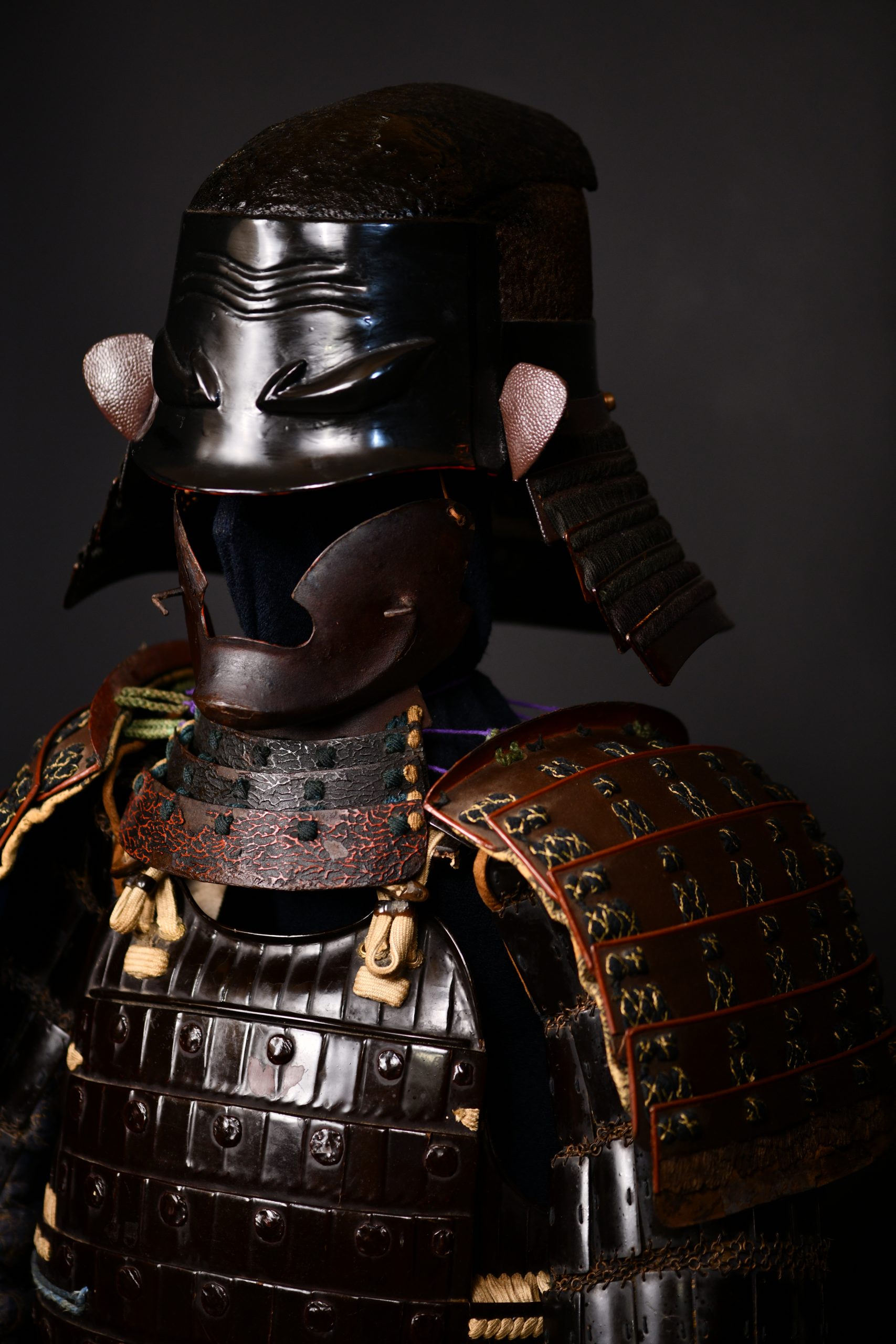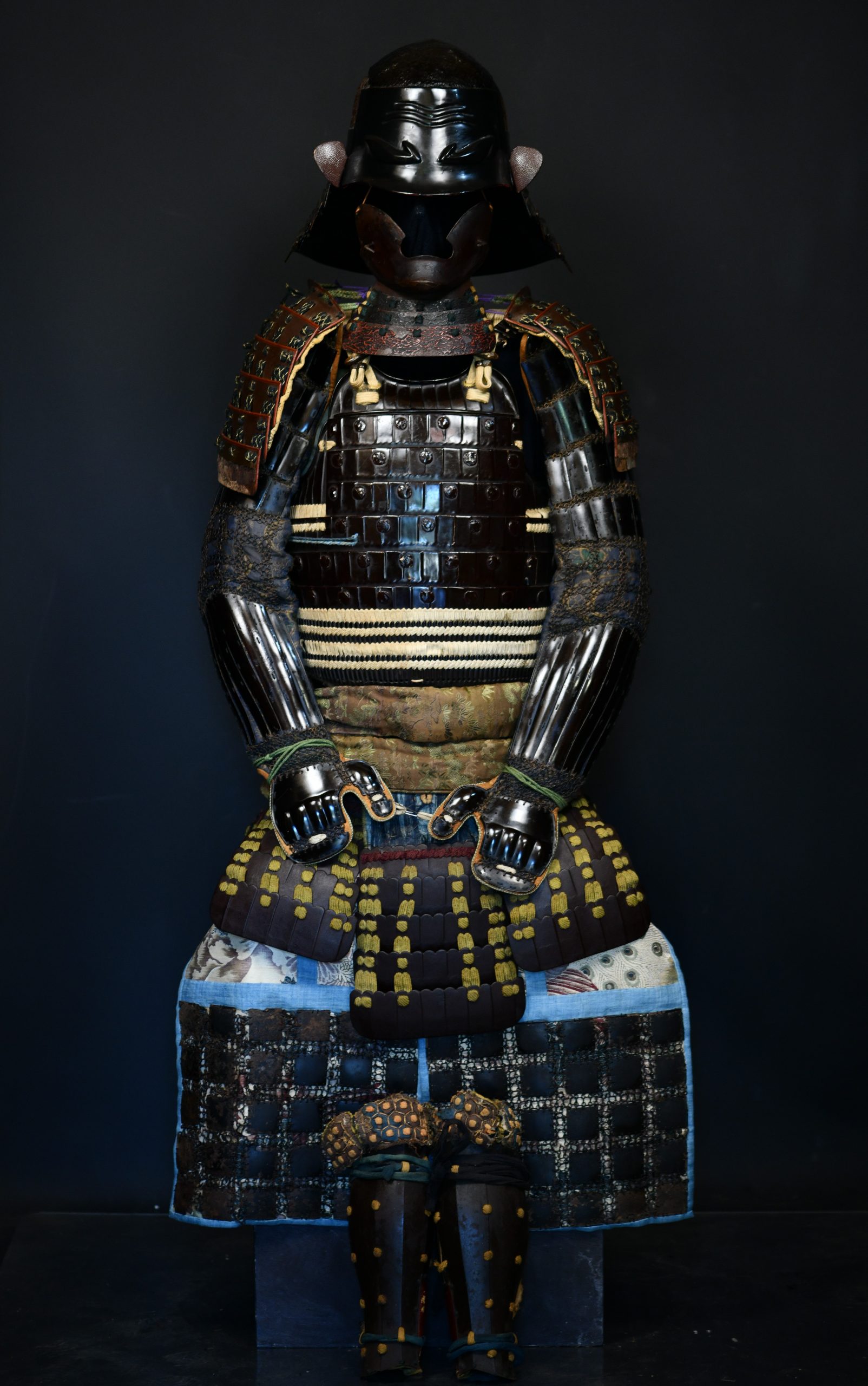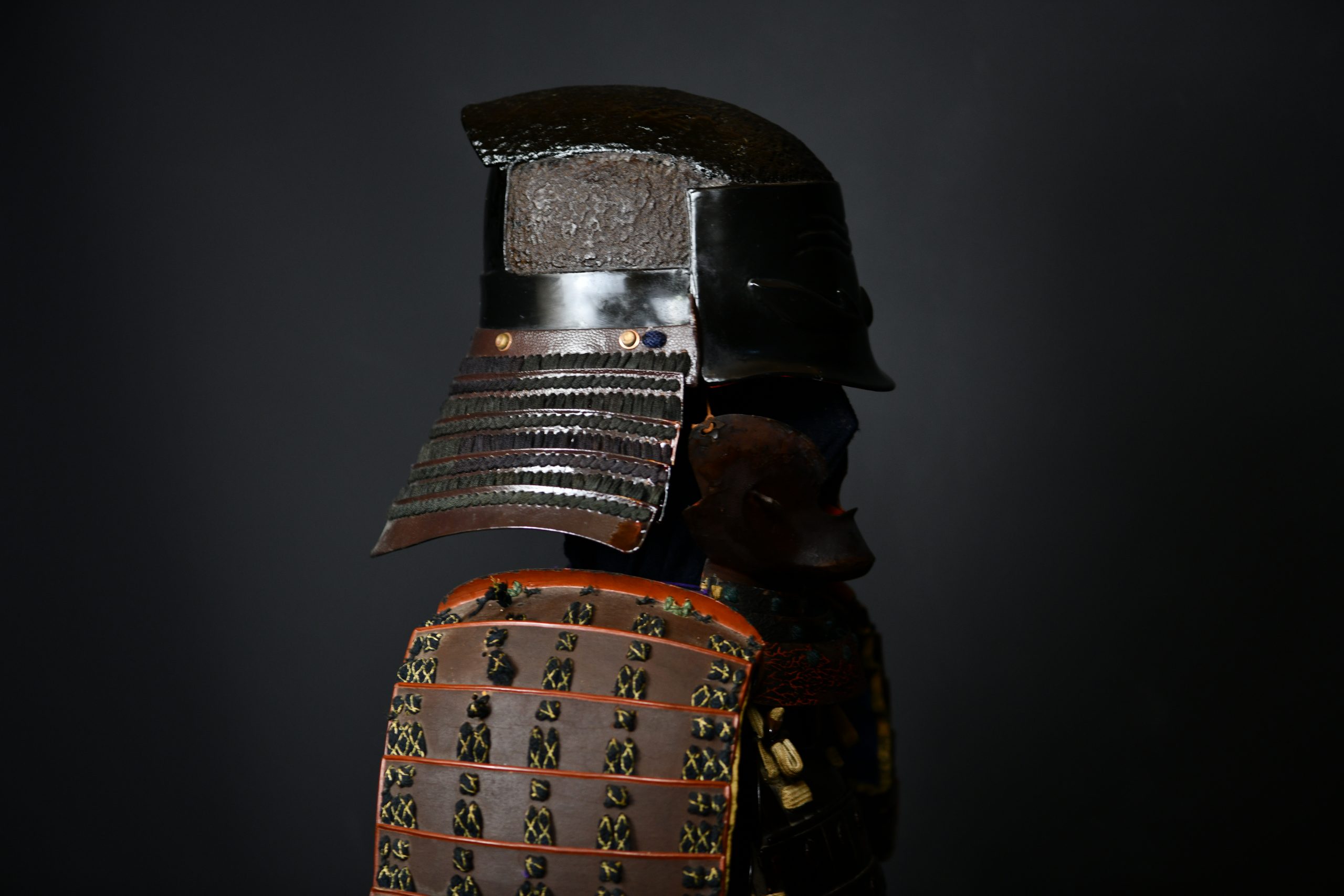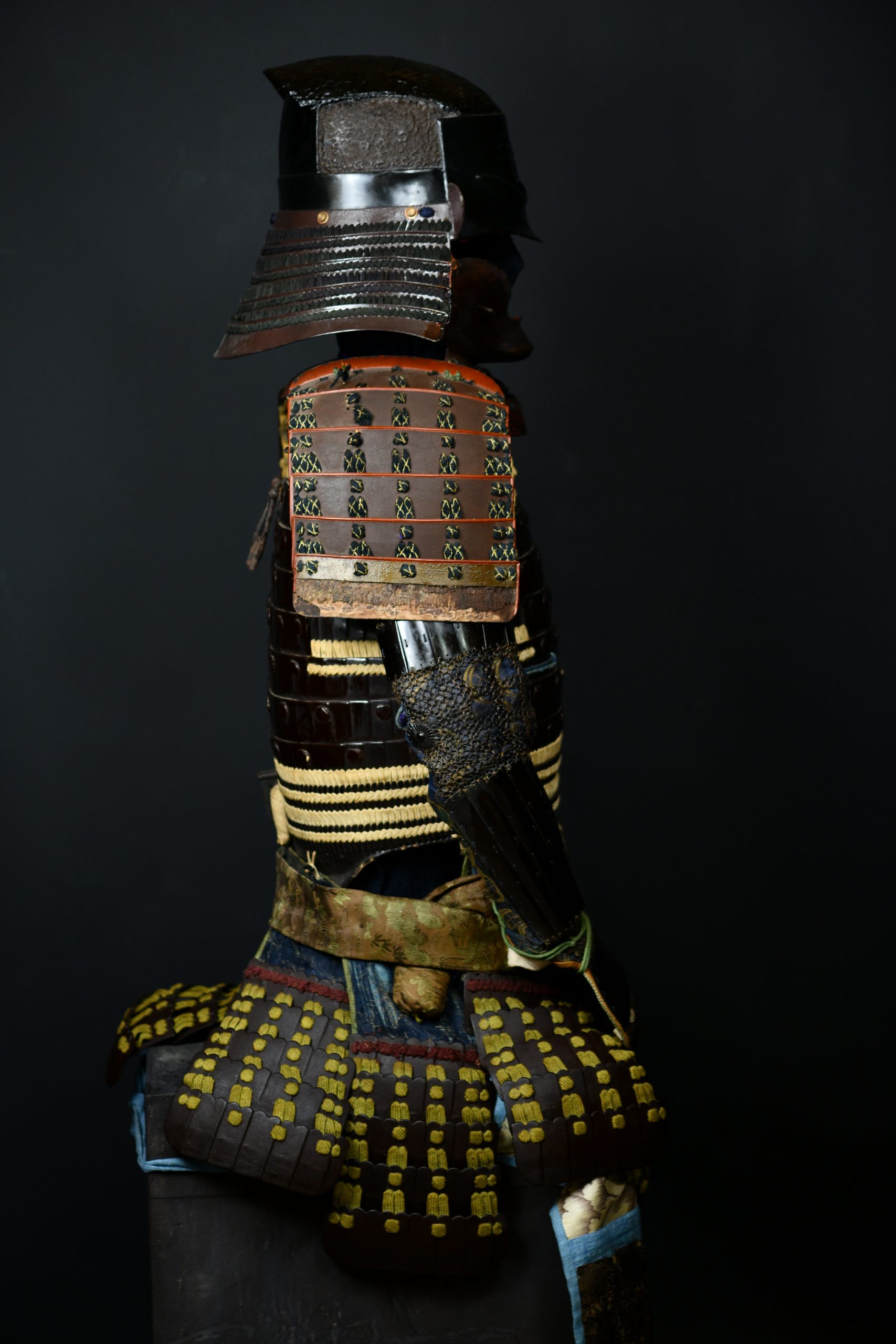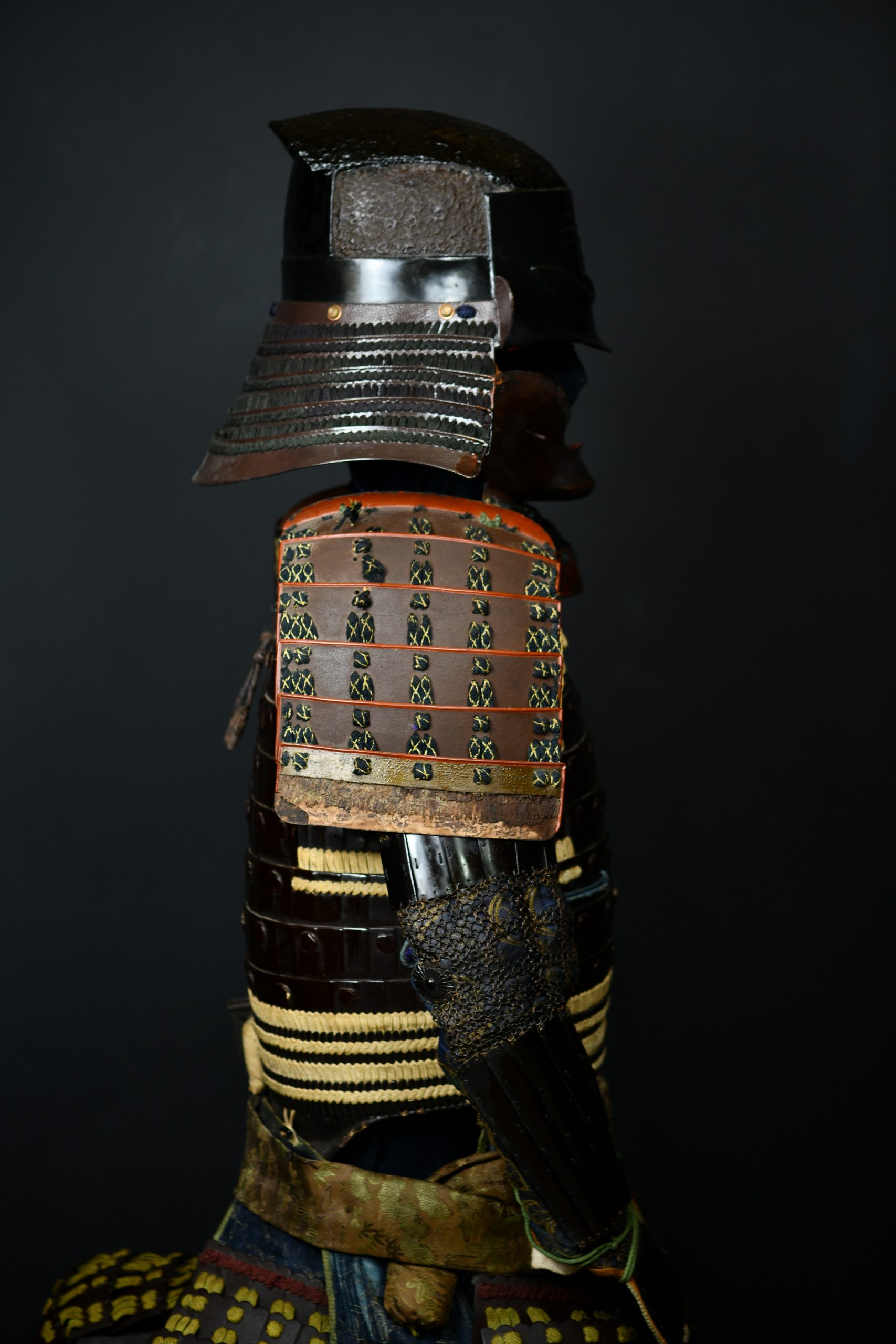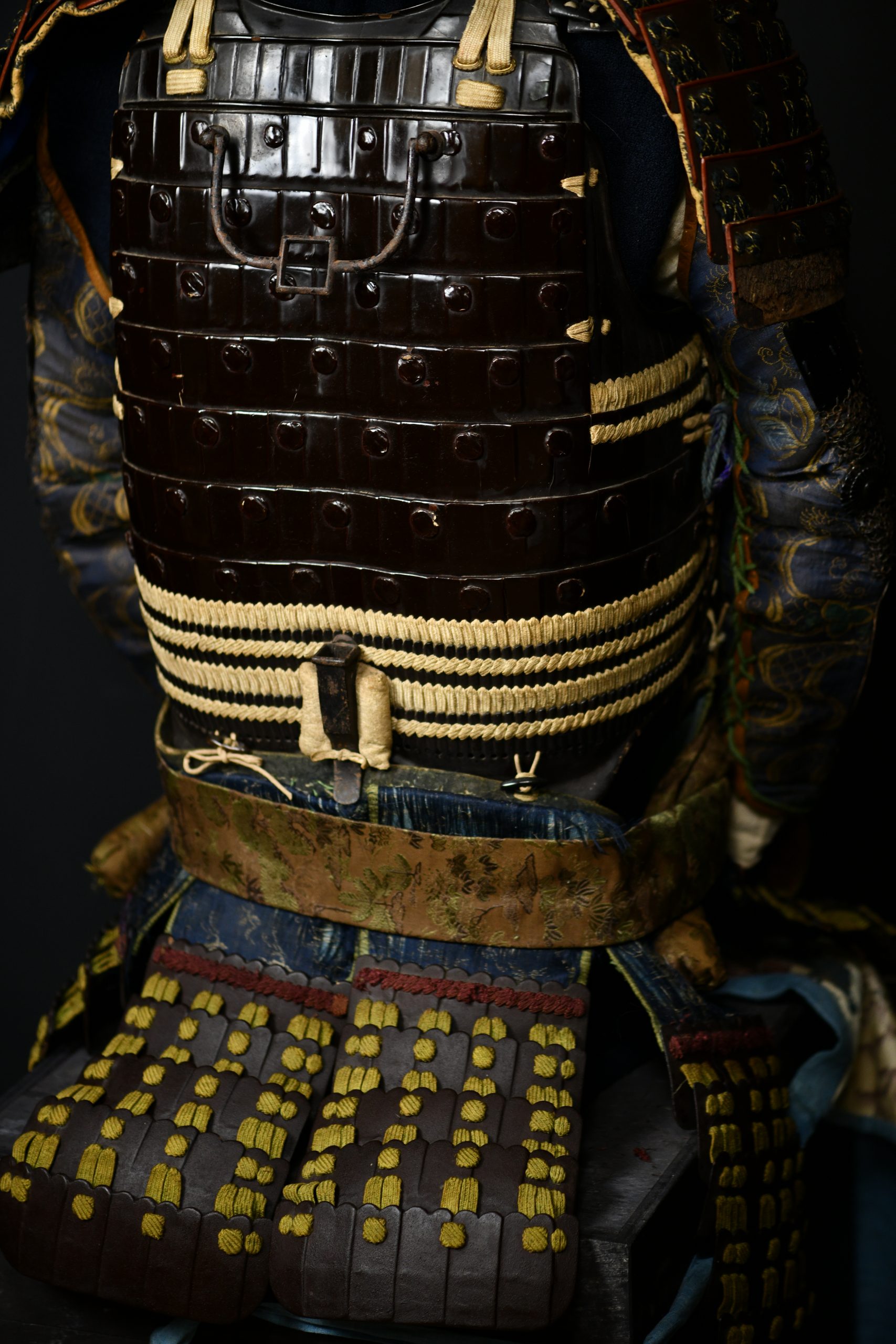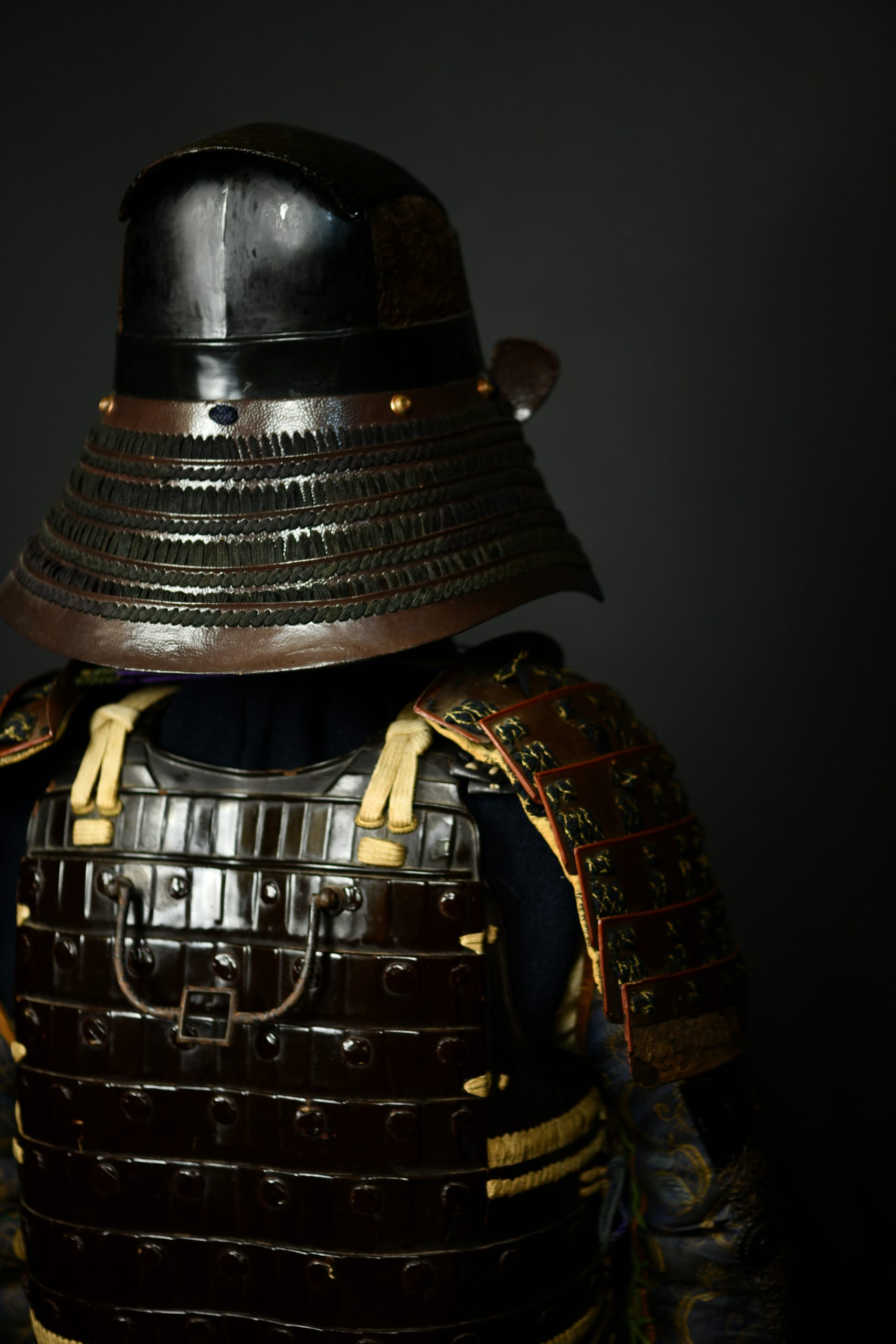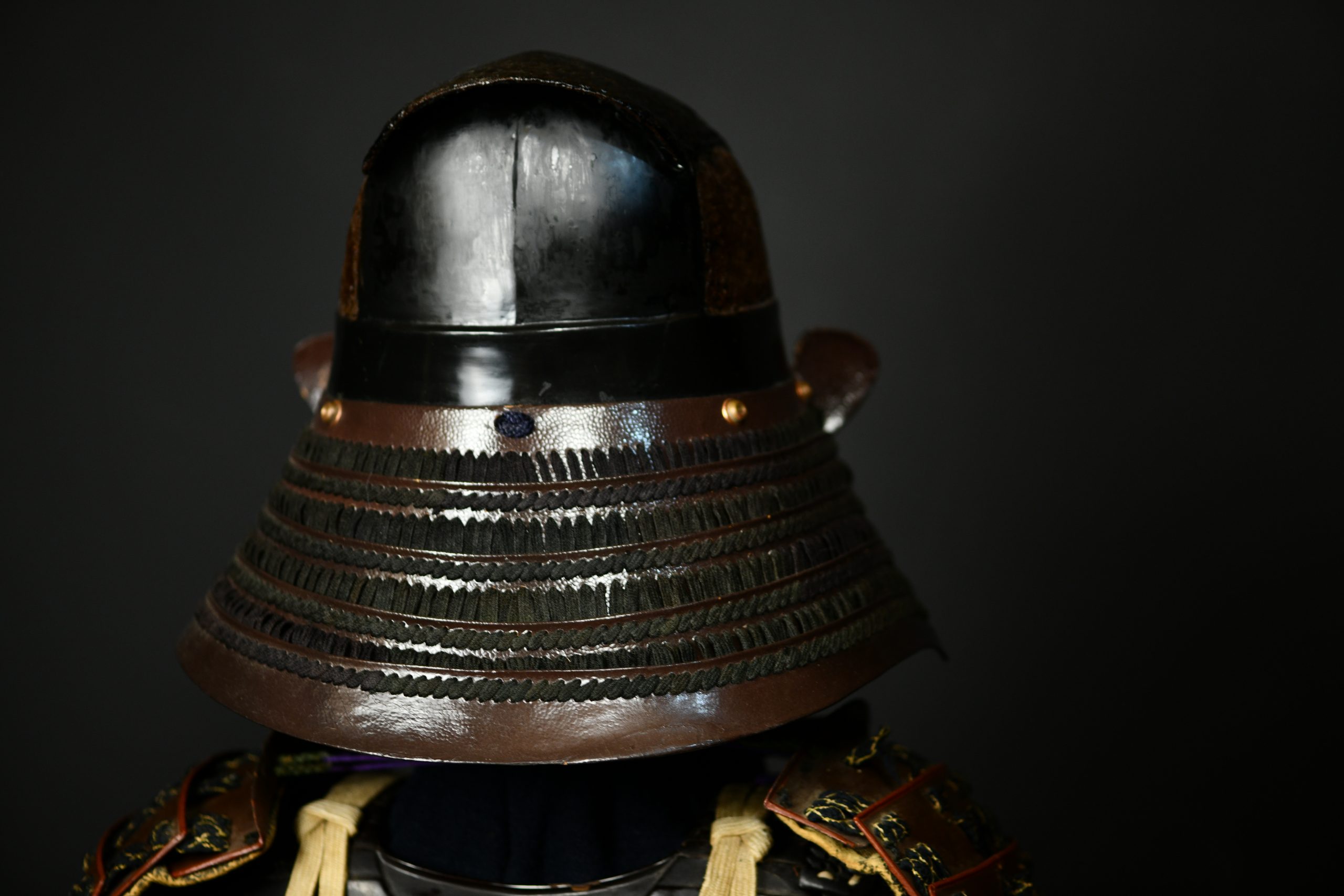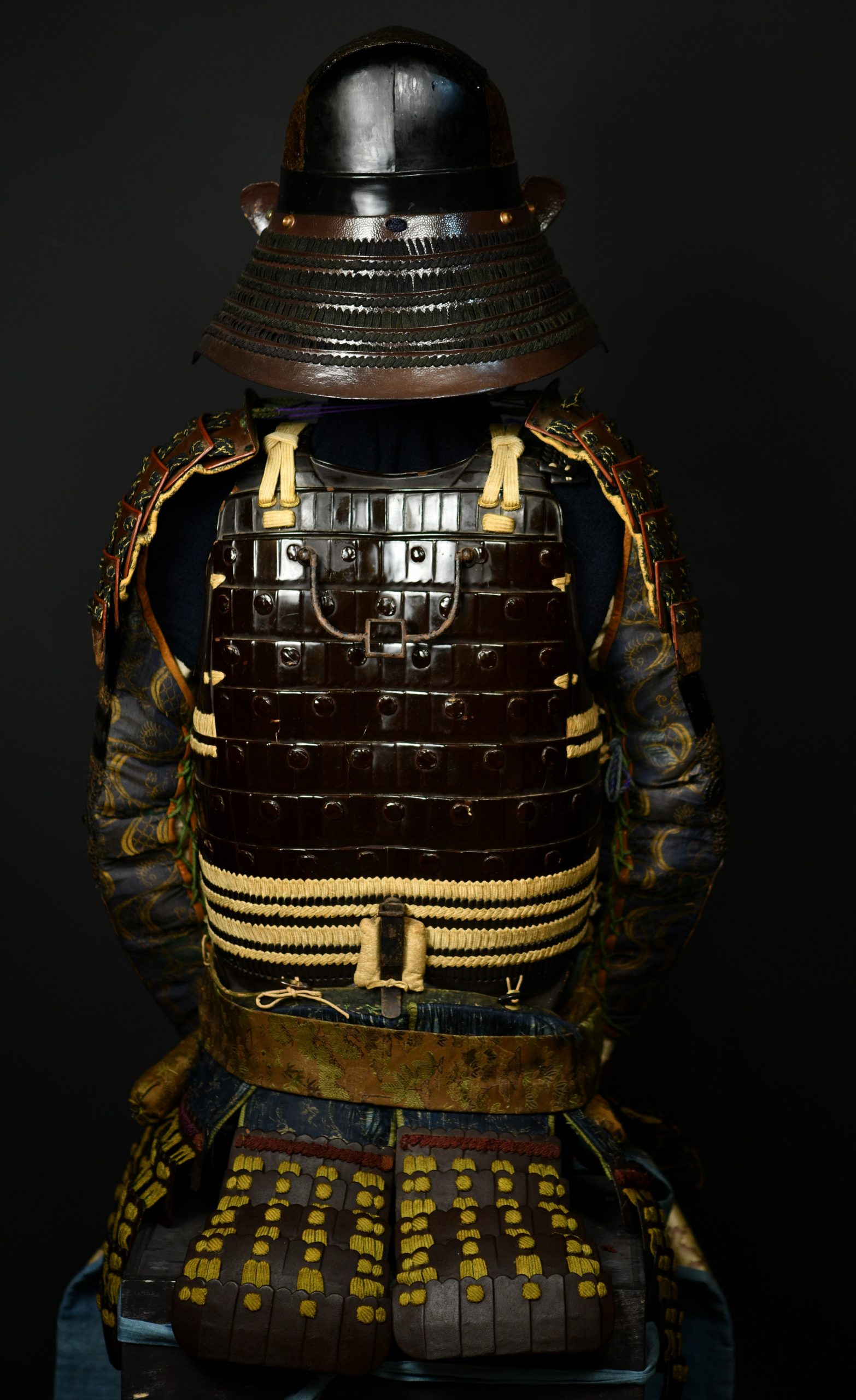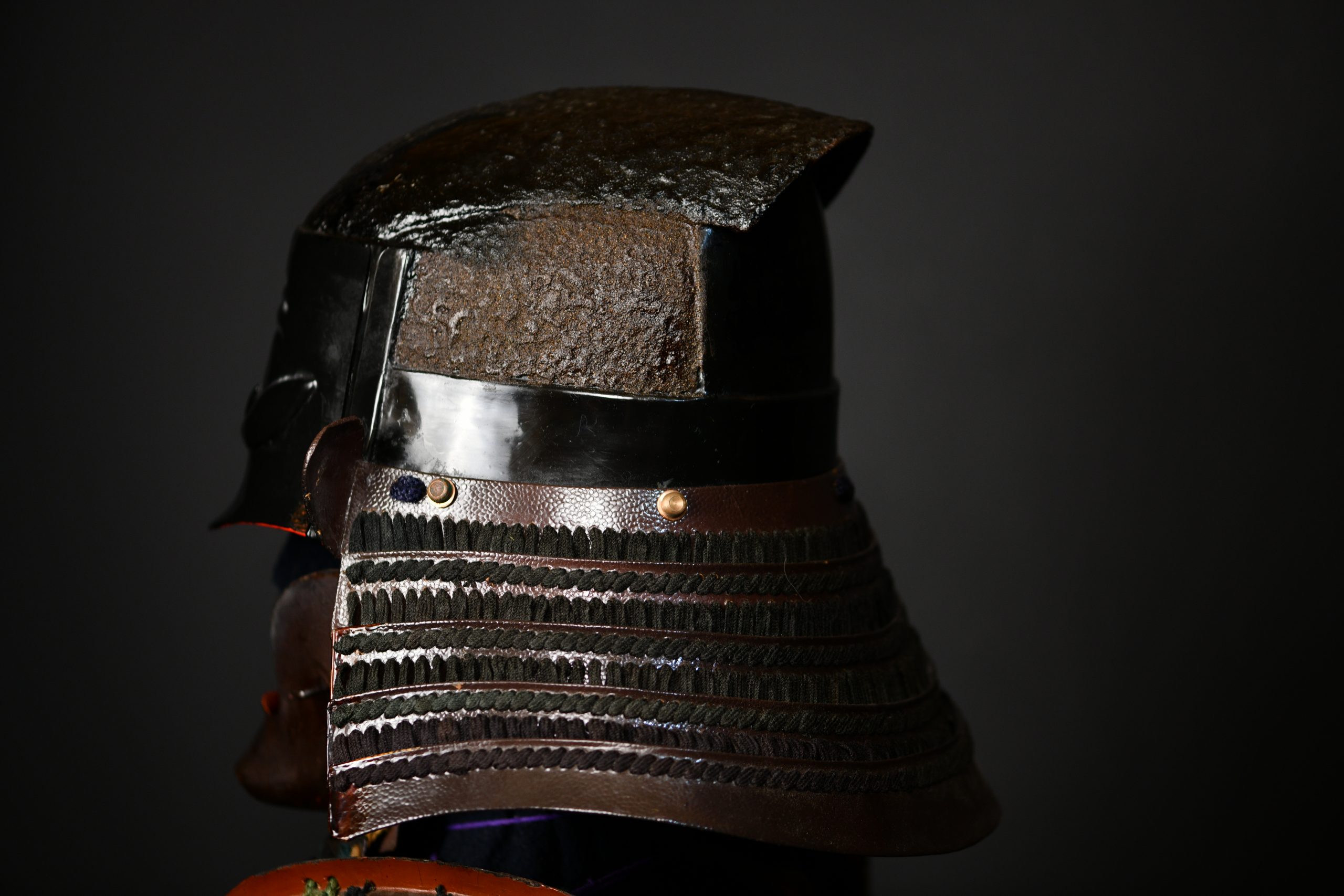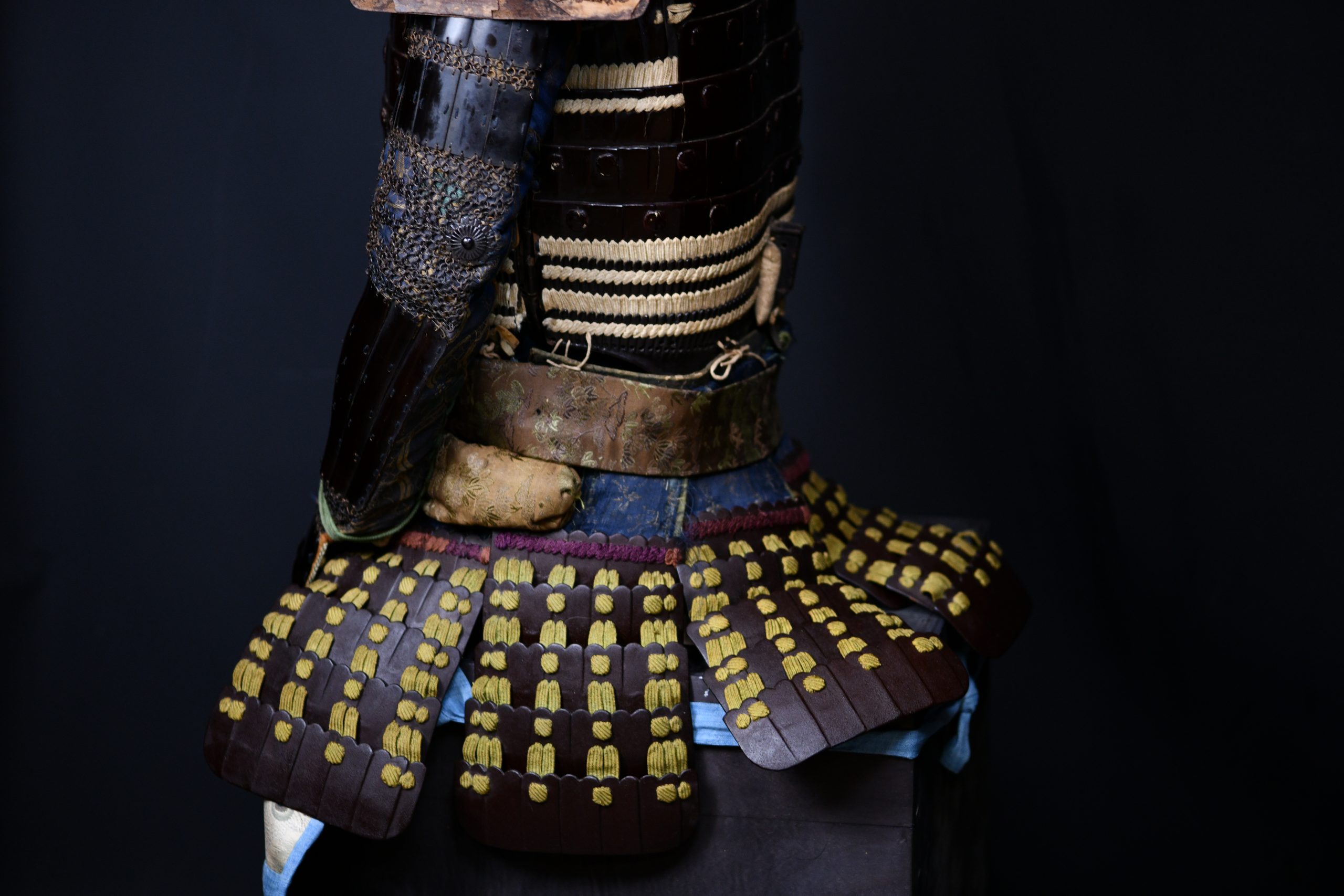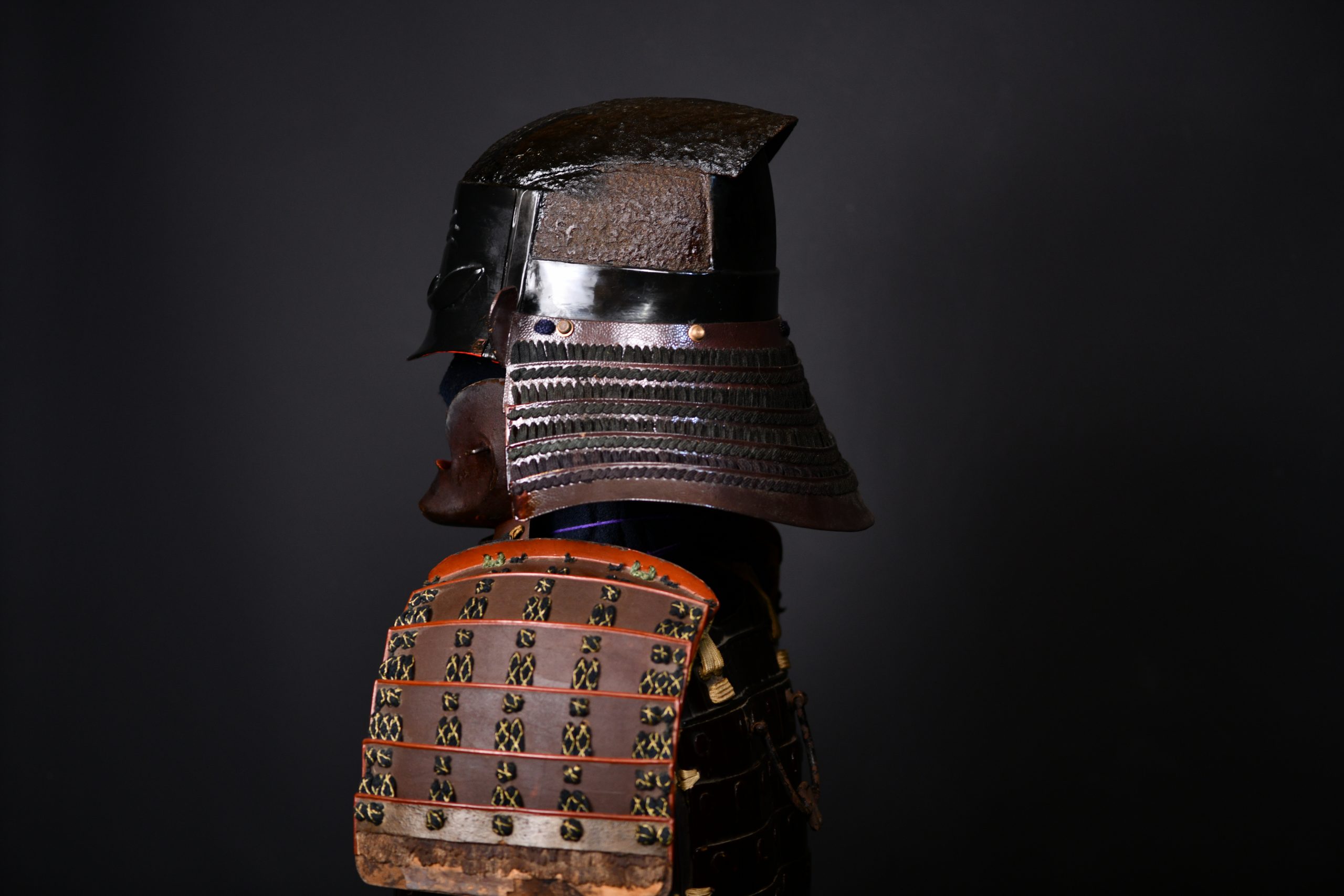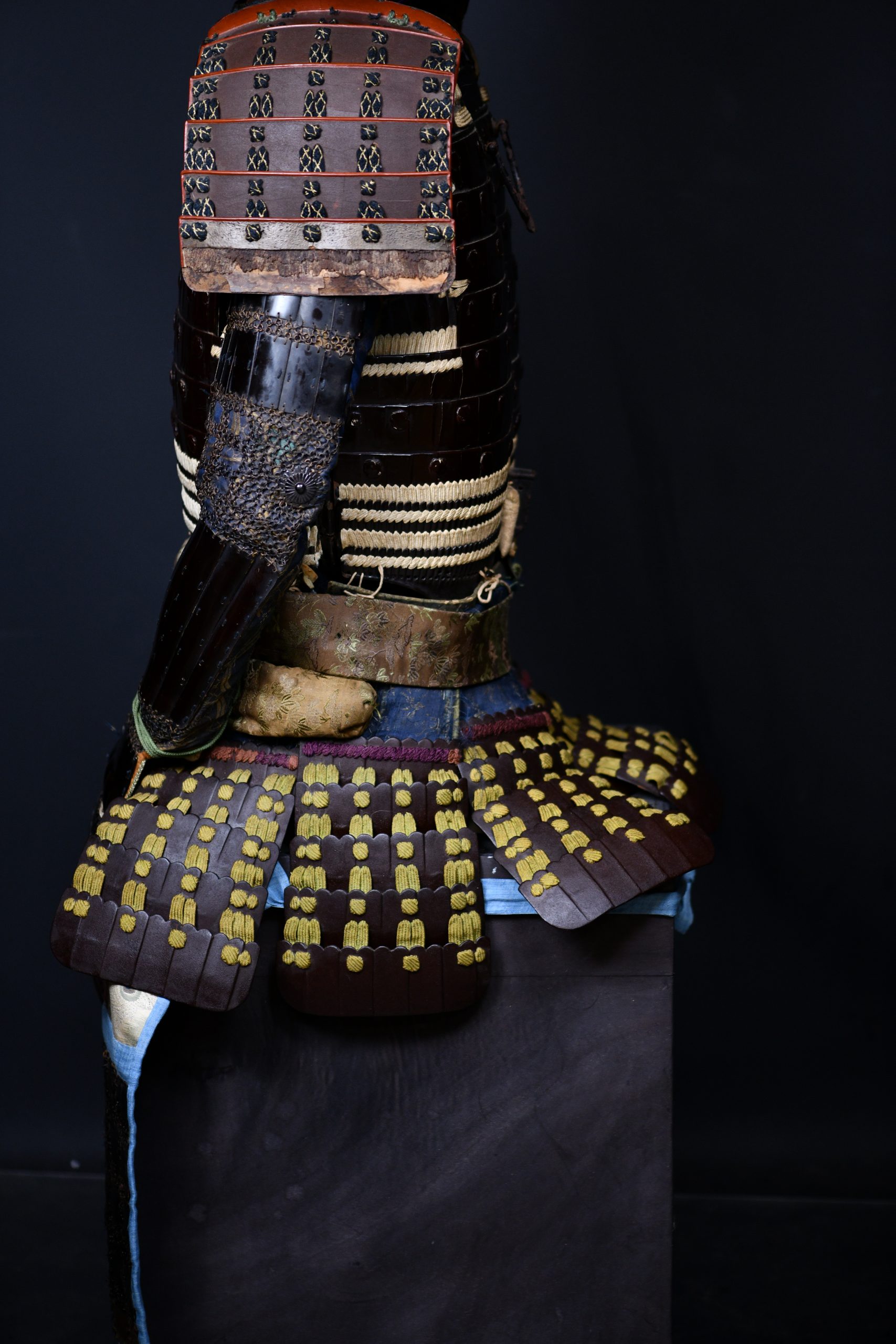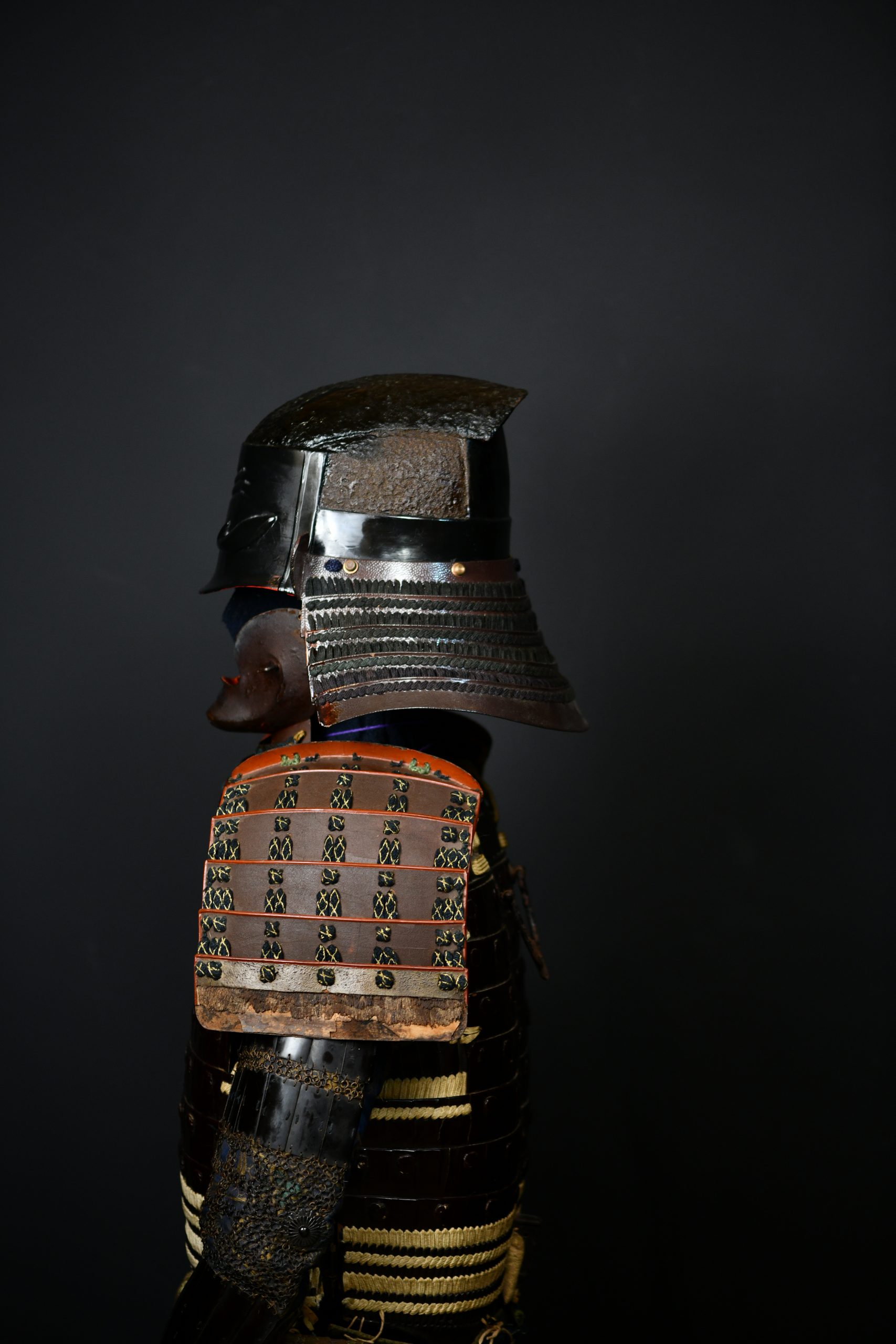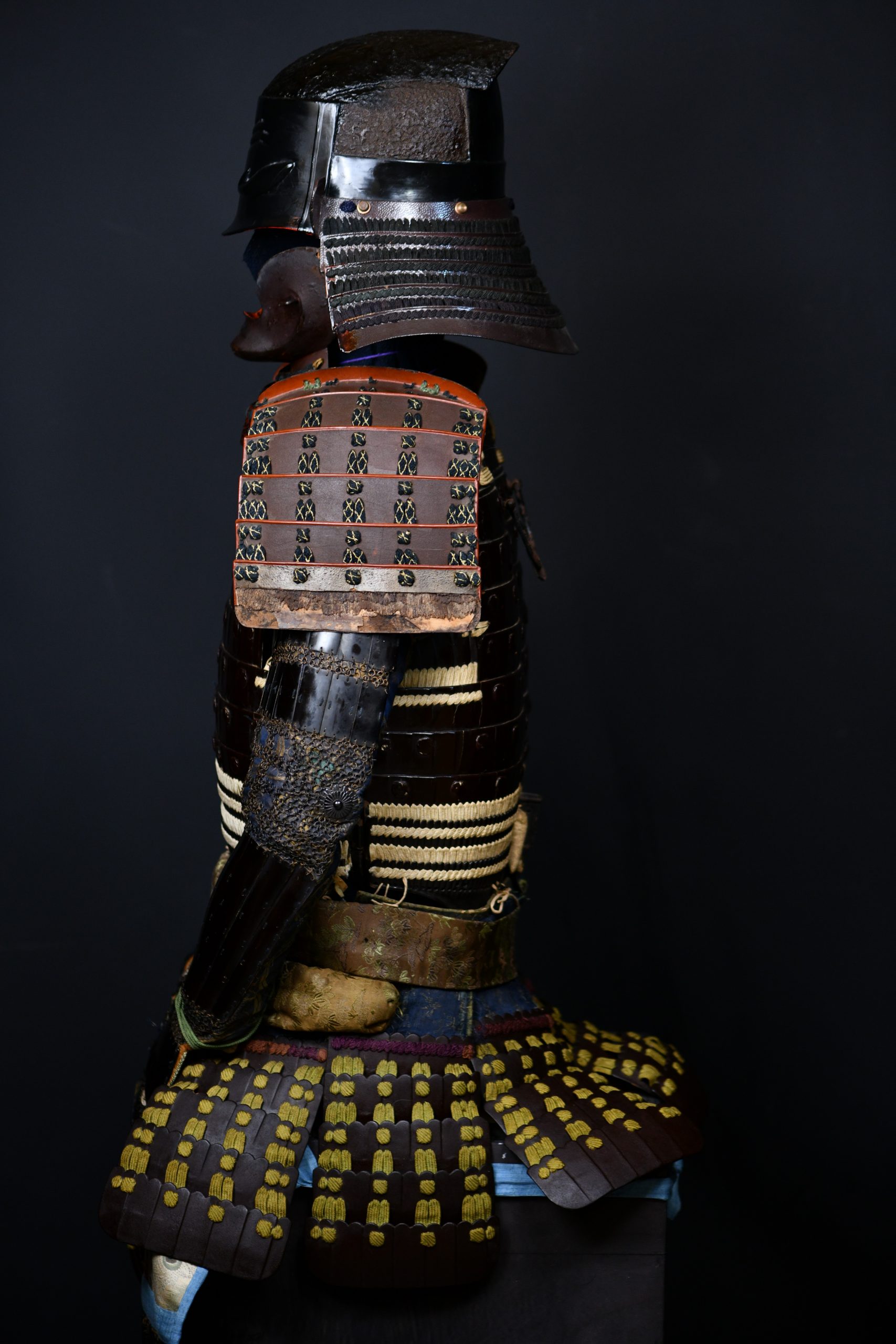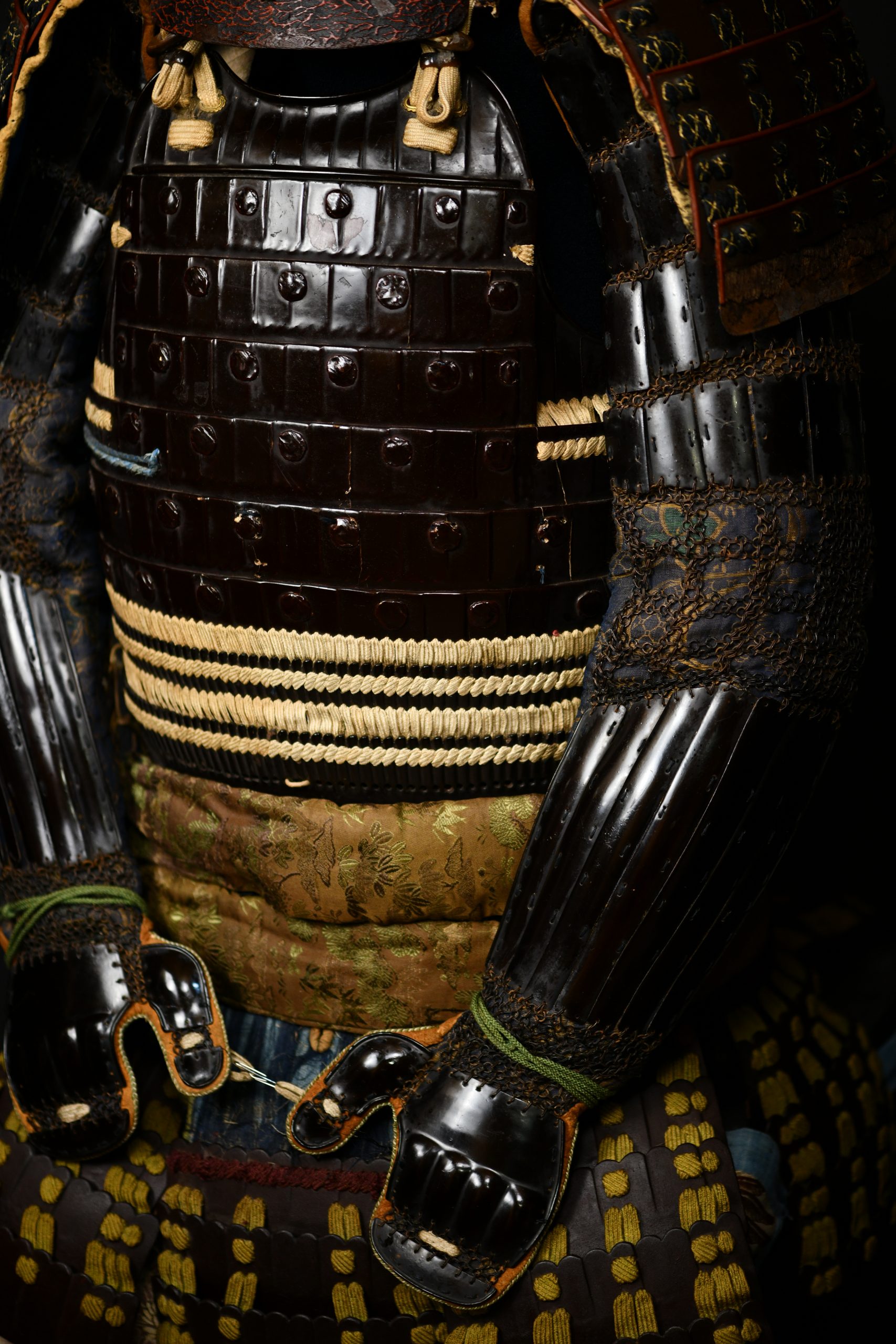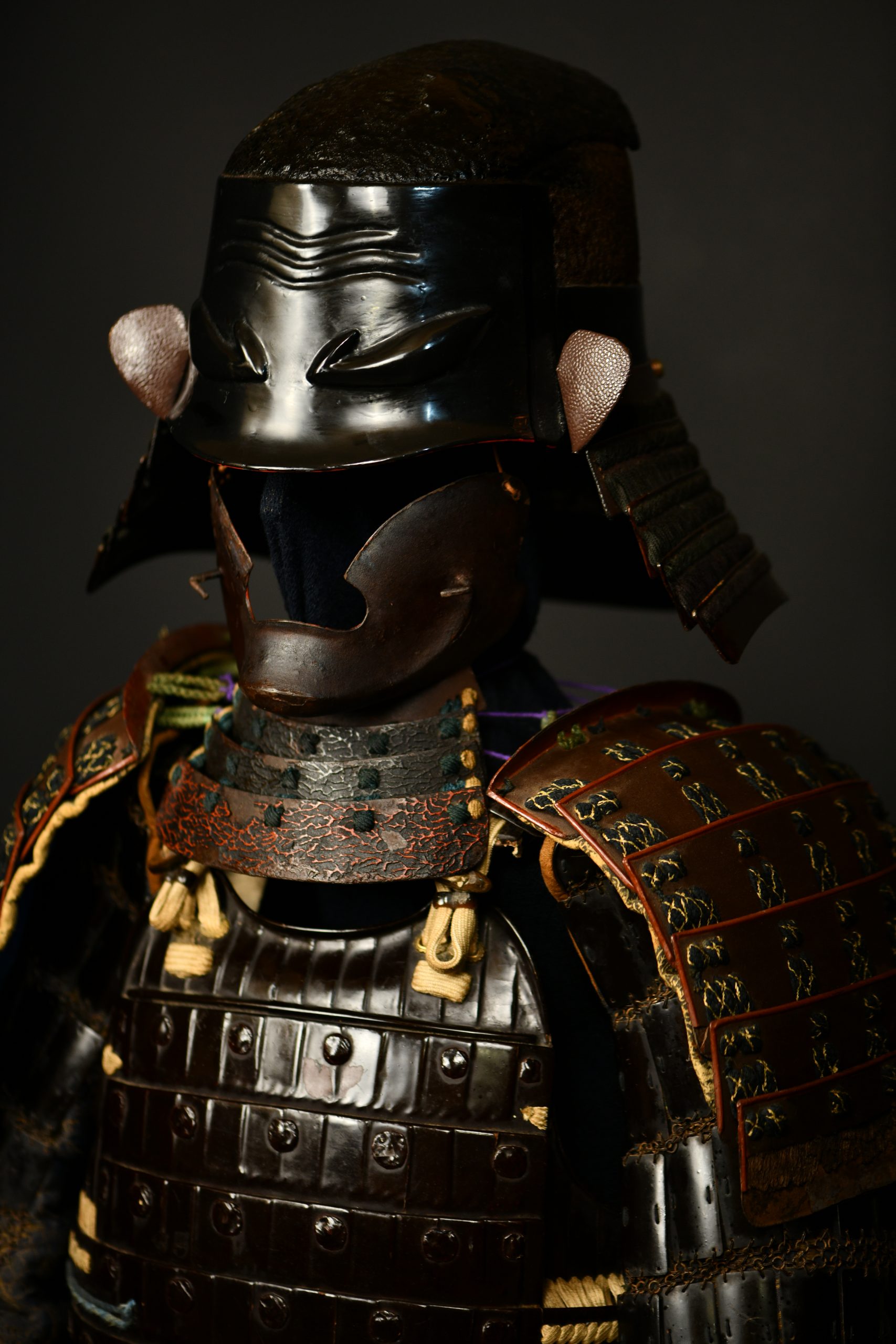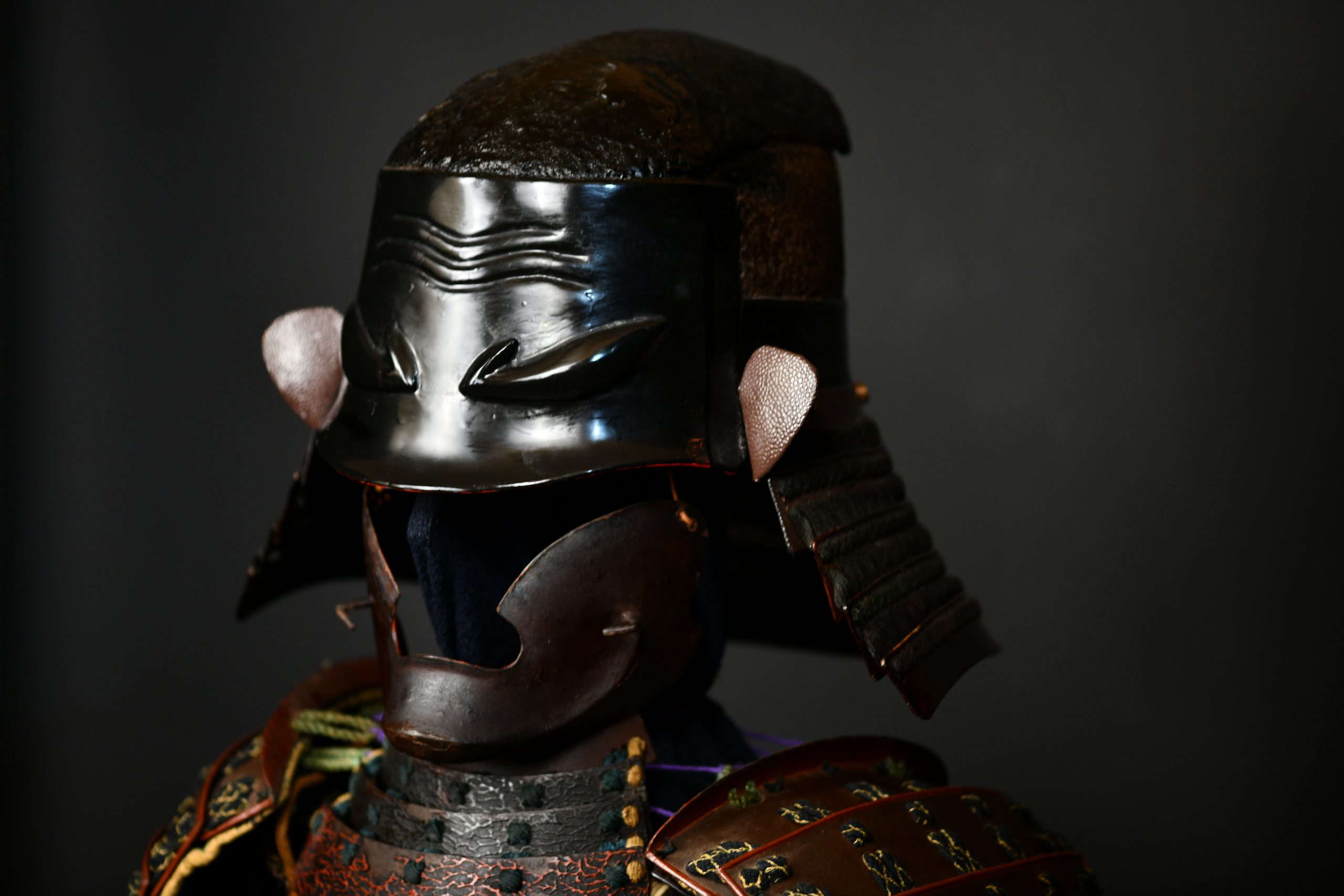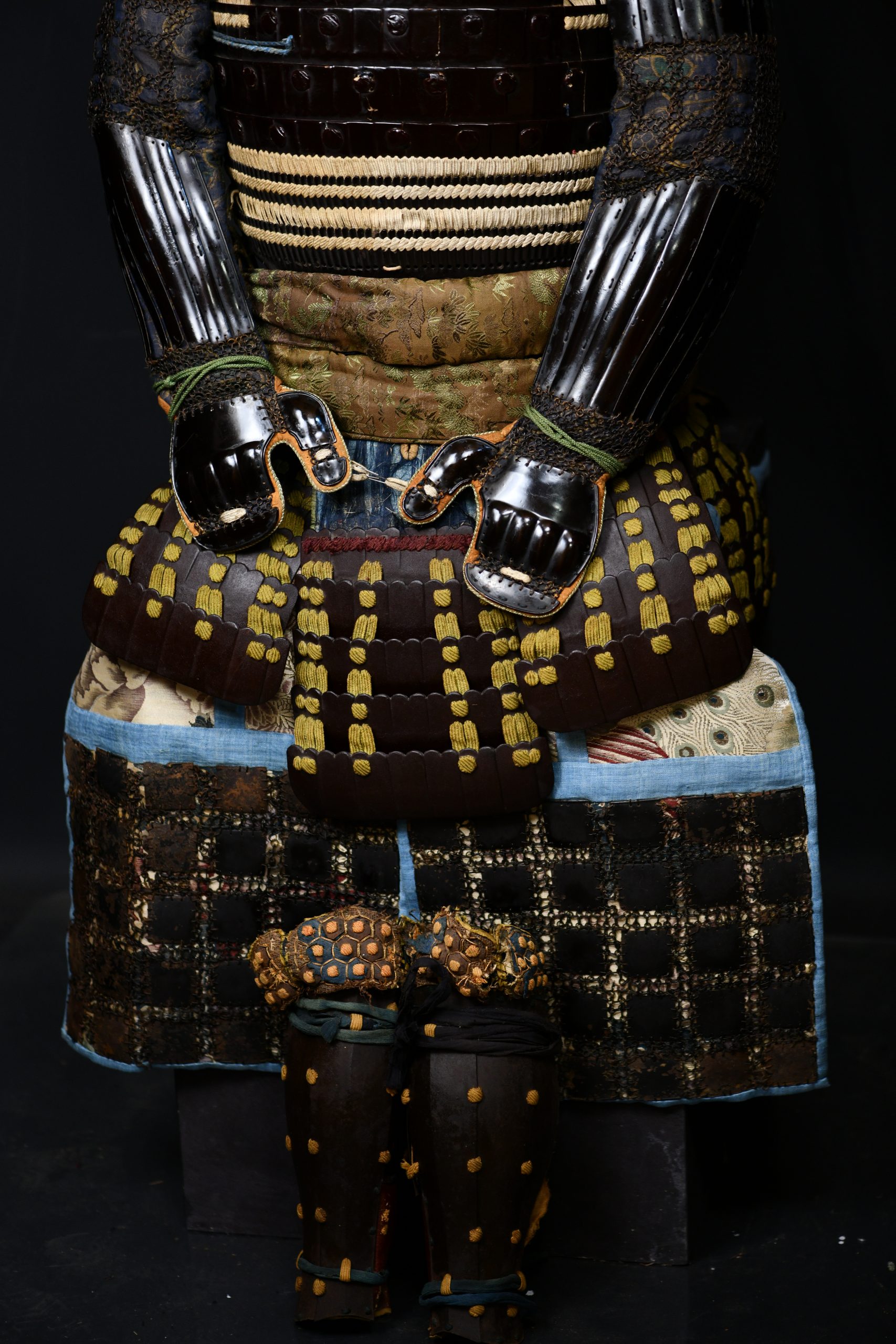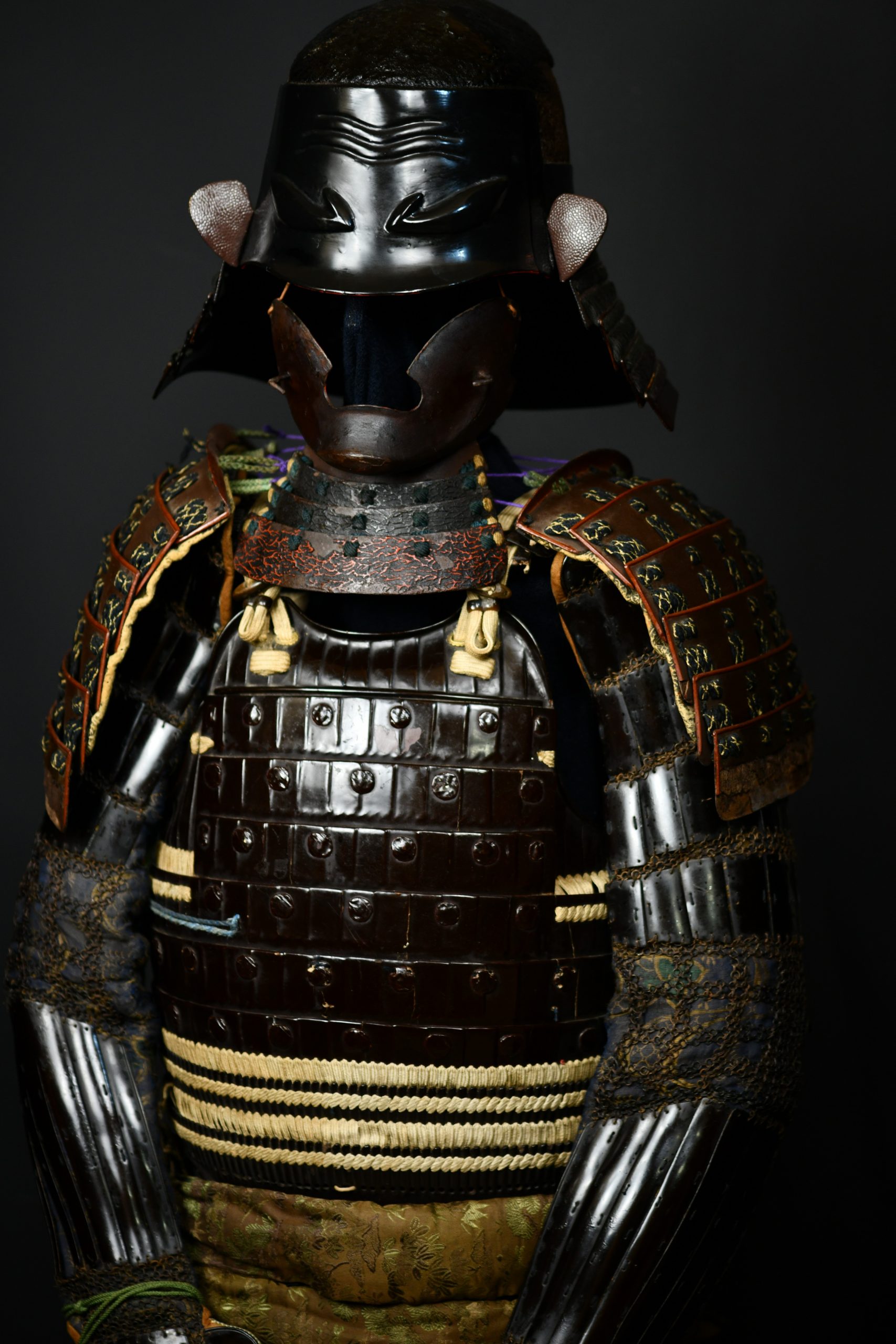Description
About US:
Our photographs are taken without retouching or photoshop to ensure that the customer can judge the reality of the object. Thanks to a constant work directly with the best collectors, museums and galleries in Japan and friendship with them, along with a profit margin much lower than the European competition we can offer objects so that many people can choose to have authentic pieces with hundreds of years at more than competitive prices. After all, samurai art is our passion and we want to share it with the world.
About The armor:
It Comes with certificate of SupeinNihonto.
ITEM:
This superb Japanese armor from the Edo period is a striking example of samurai military design focused on function and dignity. Unlike more flamboyant sets, this piece radiates authority and presence through simplicity and structure. Its compact silhouette and crisp lacquered finish in dark tones reinforce its martial character with quiet strength.
The kabuto, a uncommon saiga type forged entirely in iron and lacquered in black, demonstrates solid, utilitarian construction. The surface features simple but elegant details, such as raised lines on the visor evoking restrained power. The top of the bowl has a rough, textured surface, which, although visually reminiscent of nerikawa, is definitively iron, further emphasizing its durable, battle-ready nature.
The facial protection consists of a hanpō — not a full menpō — providing lower-face coverage with a stern expression. The piece is lacquered in dark brown, with well-defined contours and raised cheeks, and is paired with a five-lame yodarekake (throat guard), carefully laced and articulated.
The dō is an okegawa ni-mai dō (two-piece horizontal plate cuirass), constructed from lacquered iron plates riveted with decorative circular mon. Its side-opening structure grants excellent mobility while maintaining strong protection. The shoulder guards (sode) are reinforced with leather and laced with green and black silk cords, consistent in style with the hanging kusazuri flaps protecting the hips.
The kote (armored sleeves) combine iron splints and chainmail over indigo-dyed cloth richly decorated with golden motifs. The haidate (thigh protectors) and suneate (shin guards) match the brown lacquer of the armor, incorporating vintage fabrics, some subtly restored to preserve authenticity.
Overall, this armor represents the samurai ideal: balance between purpose, presence, and refinement. Its sober yet commanding appearance evokes the image of a disciplined warrior whose renown required no embellishment.
Kabuto (helmet)
This helmet is a saiga kabuto. Uncommon model of kabuto. It is entirely made of forged iron, covered in black lacquer, providing both durability and a sober appearance. The upper surface is smooth and glossy, typical of practical Edo-period armor.
The mabizashi (visor) is slightly flared and decorated with embossed features resembling eyebrows and a frowning brow, giving the helmet a stern expression. The side flaps (fukigaeshi) are covered in stingray skin (same), a decorative element that elevates its status.
The shikoro (neck guard) is composed of several tiers of iron plates laced together with dark cords and finished with a thick, protective edge.
Mengu (face armor)
This armor includes a hanpō (lower face mask without nasal coverage), lacquered in black with consistent patina. It covers the jaw and cheeks, presenting a restrained expression. The throat is protected by a three-tier tare made of laced metal lamellae.
Dō (cuirass)
The cuirass is a finely preserved okegawa dō (barrel-type cuirass with vertical riveted plates), lacquered in deep brown-black tones. The surface is highly glossy and features evenly spaced rivets (hoshi) giving it a distinct Edo-period character. Cream-colored side cords serve as fasteners.
Sode (shoulder guards)
Large shoulder guards (ō-sode) are composed of multiple brown-lacquered lames, featuring yellow decorative cords forming X-shaped knots across the rows.
Kote (armored sleeves)
The sleeves are of dark blue silk richly embroidered with gold, reinforced with chainmail and black lacquered iron vambraces. The gloves have additional protective plates sewn into the fabric.
Haidate (thigh protectors)
The haidate are constructed with dense textile bases and feature reinforced square iron inserts, forming a grid across the upper thighs.
Suneate (shin guards)
The greaves are made of vertical iron plates lacquered in brown, with interior padding and articulated protection for the knees, which are adorned with ochre hexagonal motifs.
Textiles and Additional Features
The waist sash is a golden brocade featuring foliage designs. The inner padding is lined with a mix of traditional patterned silks, possibly reused kimono fabric — a sign of Edo-period practicality blended with aesthetic attention.
An authentic samurai armor that will be the central focus of any room where it is placed and that will delight any fan of Japanese art. This exclusive piece is making it an incredible opportunity for any collector of Japanese, war or simply historical art to get their hands on a piece that will attract attention wherever it is displayed, from offices, to private homes, offices or restaurants and will give a regal look to any place. The armour has gilded details that show the quality of the piece. The incredible workmanship accentuates such ornate pieces as the kabuto, the mempo and the Do. The stand to assemble it and the box are included. This armour is sure to delight any collector of Asian art and will be the focal point of any visitor’s home, shop or office. There is a very ancient object and there are damaged by time and tears. Due to the delicacy of continuous assembly and disassembly, returns are not allowed on old armor.
